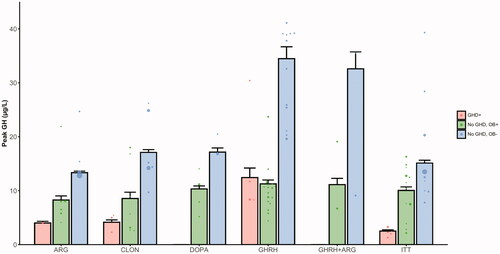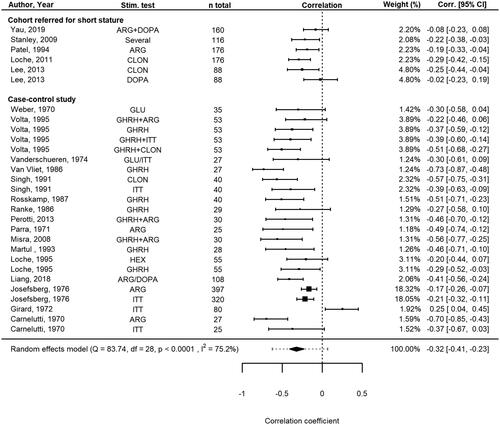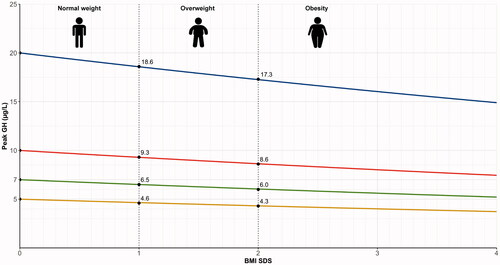Figures & data
Table 1. Overview of baseline characteristics of included studies. In total, 58 studies were included describing n = 5135 children.
Table 2. Results of meta-regressions and subgroup analyses for the meta-analysis of correlation coefficients between peak GH and BMI SDS.
Table 3. Overview of non-syndromic patients without GHD with obesity and without obesity who showed an inadequate response in the GH stimulation test based on a pre-specified peak GH cutoff values.
![Figure 1. Schematic representation of the hypothalamic-pituitary-somatotropic axis and the effect of several GH secretagogues used in GH stimulation tests. GH secretagogues can be administered orally (indicated by the tablet icon), intramuscularly, or intravenously (indicated by the syringe icon). Clonidine and hypoglycemia, either introduced by insulin in the ITT or by glucagon administration, directly stimulate pituitary secretion of GH. Beta-adrenergic receptor agonists such as arginine and L-dopa exert their GH stimulating effect by lowering the chronic inhibitory somatostatinergic tone. At the hypothalamic level, the neuropeptide galanin stimulates the release of GHRH. The synthetic growth hormone-releasing peptide hexarelin is a ligand for the growth hormone secretagogue receptor that stimulates the production of GHRH and inhibits the release of somatostatin [Citation5]. GHRH: growth hormone-releasing hormone; GH: growth hormone; IGF-1: insulin-like growth factor-1; ITT: insulin tolerance test.](/cms/asset/68590682-a751-4d98-a69f-5ce468c06b50/ilab_a_1956423_f0001_c.jpg)




